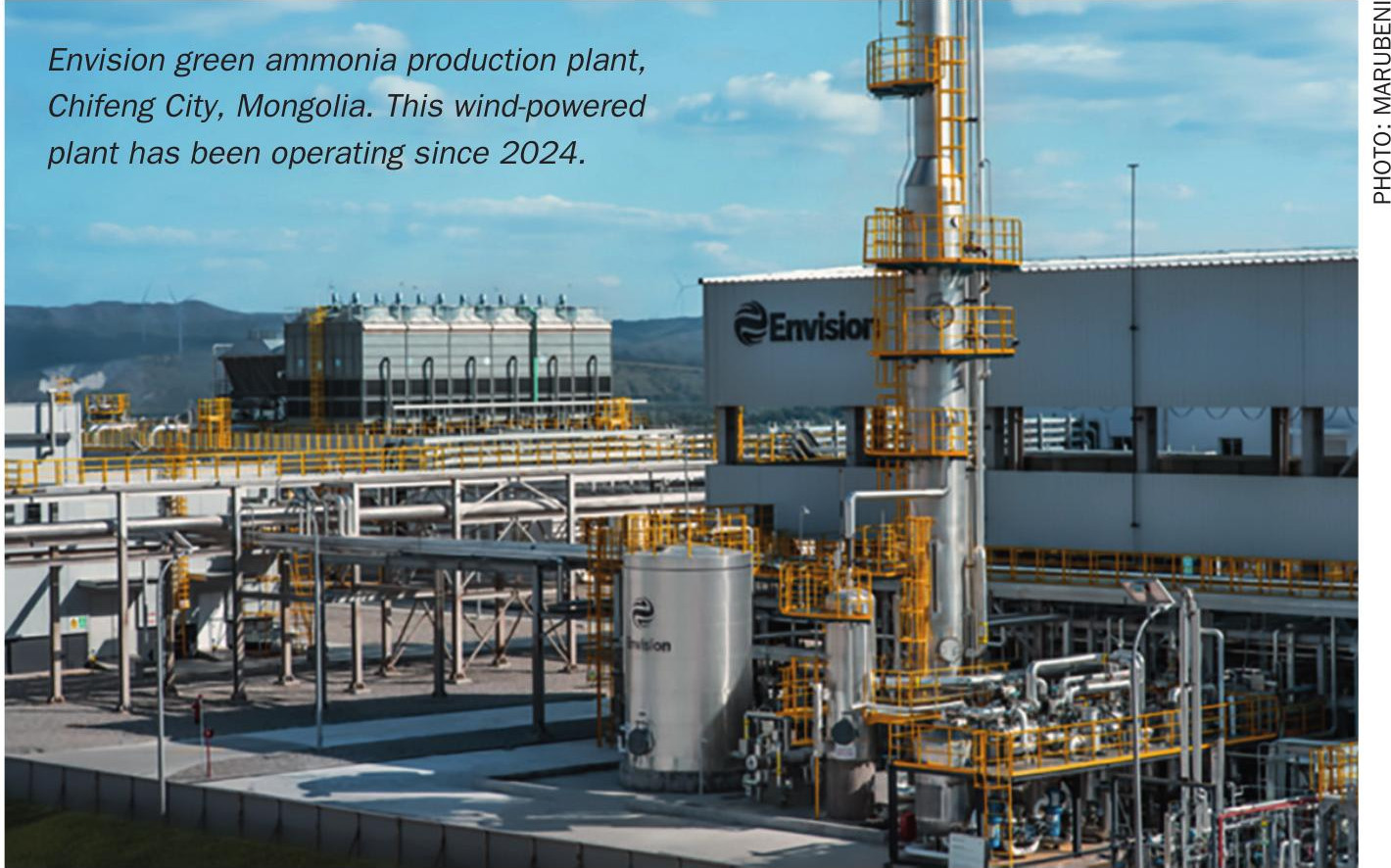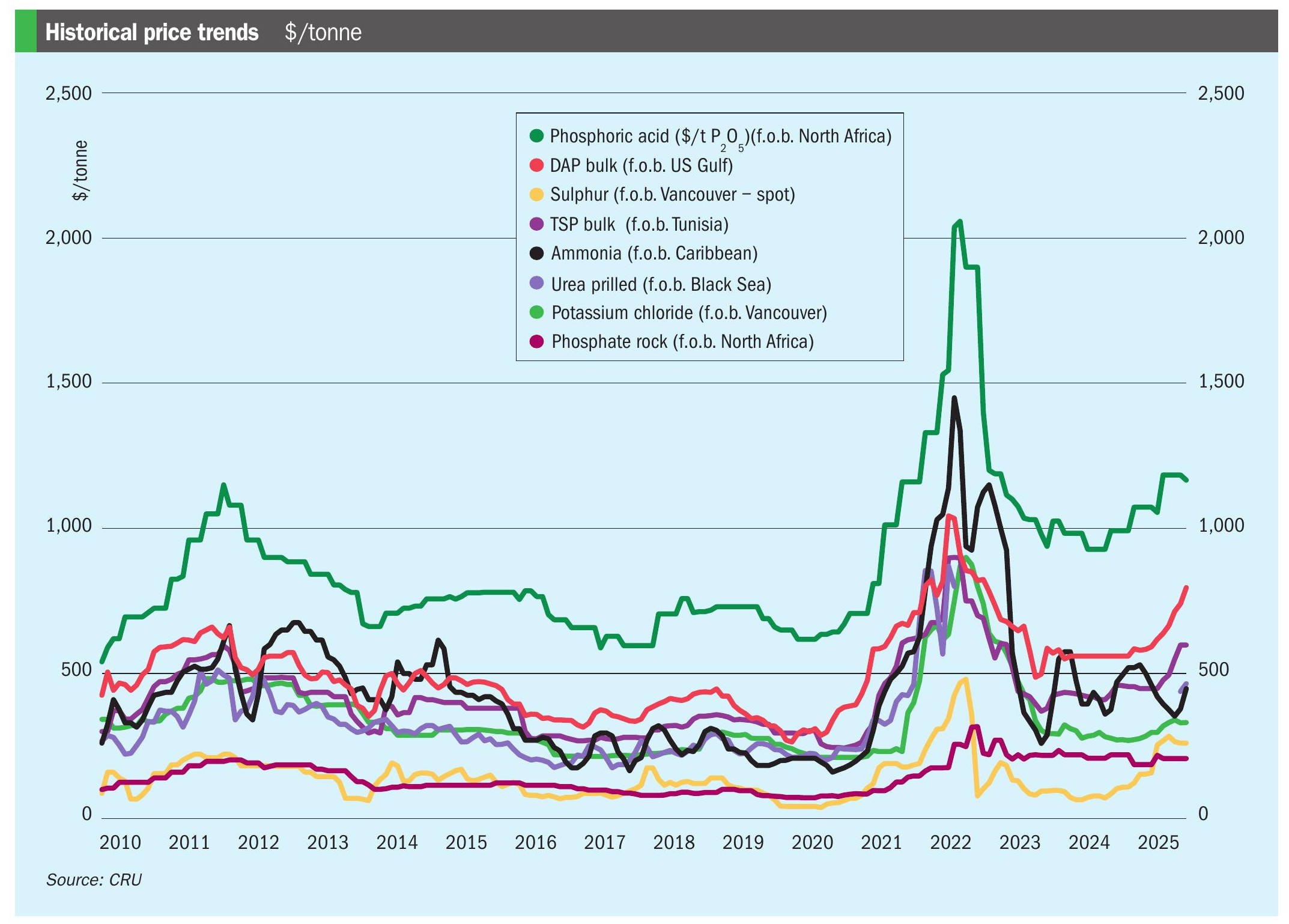Nitrogen+Syngas 385 Sept-Oct 2023

30 September 2023
Price Trends
Price Trends
Market Insight courtesy of Argus Media
NITROGEN
In ammonia markets, the rate of buying inquiries has been rising, supporting a slightly firmer price environment, but producers report that they are sold out across most key supply regions. The limited spot f.o.b. availability has stalled trade, with only one sale confirmed from Bangladesh to India over mid-August. Indian buyers are looking for prompt cargoes, but most Middle East producers have nothing to offer. The supply outlook could improve in the weeks ahead as suppliers ramp up production where possible, but suppliers are in no rush to sell until a clearer picture of demand emerges for September.
Recent market drivers include:
- Limited supply – despite the steady rise in inquiries, sellers have very little additional ammonia to offer following the raft of production outages seen in the market over the past few months.
- European production rates – European plants are weighing up production strategies for the months ahead, with weak ammonia demand and high production costs creating a difficult decision for most producers in the region.
- Domestic Chinese markets – domestic prices surged in both the north and south in August, driven mainly by shutdowns of ammonia facilities and delays in start-up following plant turnarounds
- Indian buying – Marubeni has sold an 8,400 tonne Bangladeshi cargo to IFFCO for September delivery to Paradip. Marubeni has chartered the Camila B for the voyage.
Urea prices mostly fell again in mid-August, but the main development was the massive commitment of Chinese urea into India. India’s IPL has confirmed purchase of 1.76 million tonnes of urea, of which more than 1 million tonnes is currently set to load from Chinese ports. This far outpaced expectations, and has exacerbated already bearish sentiment in most market players. By committing so much urea, China surpassed pre-tender expectations by around 80%, and with production margins currently high in most regions, the market will likely soften if exports continue at this pace.
Otherwise, market activity was generally slow, as importers and traders mostly waited for the resolution of the Indian urea tender before committing to new deals. Urea prices fell in most markets – by $15/t in the US, $30/t in Brazil, $20/t in Europe and $20/t in southeast Asia – under pressure from low demand and with traders increasingly set on securing liquidity through short-sales.
Fundamentals remain weak. Neither grain nor energy markets are providing, in the short-term, much support for either sentiment or fundamental market balance.

END OF MONTH SPOT PRICES
natural gas

Ammonia

Urea

diammonium phosphate







